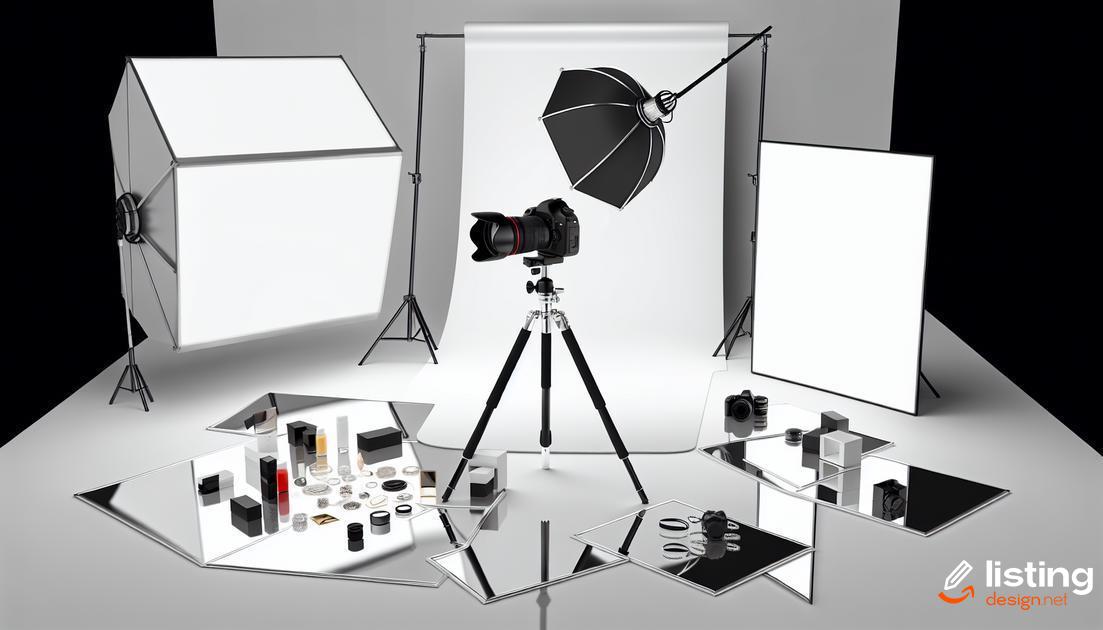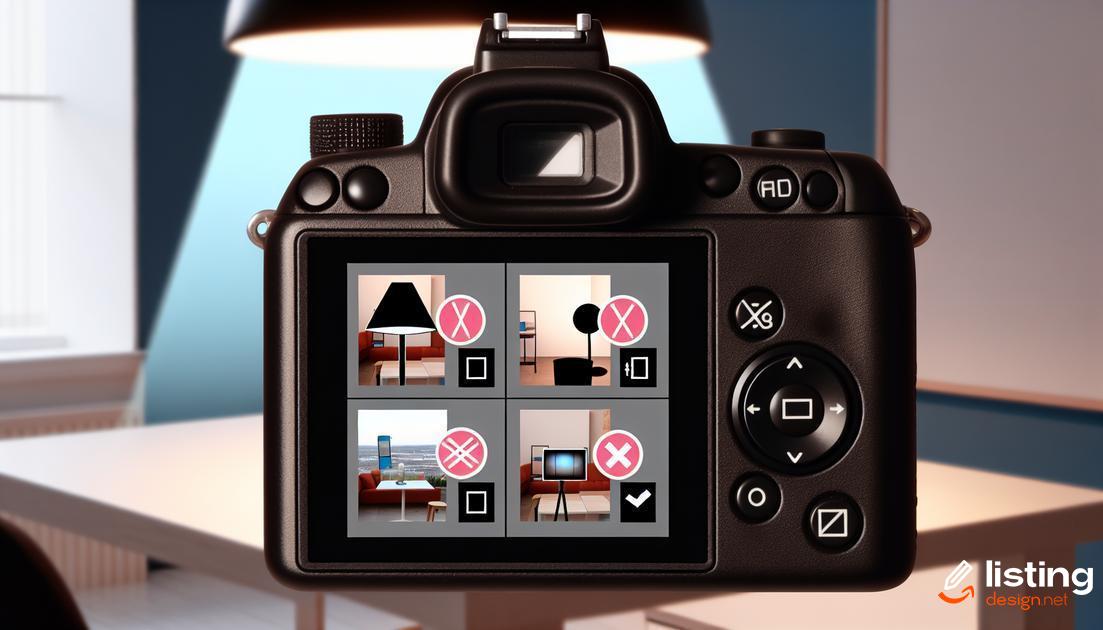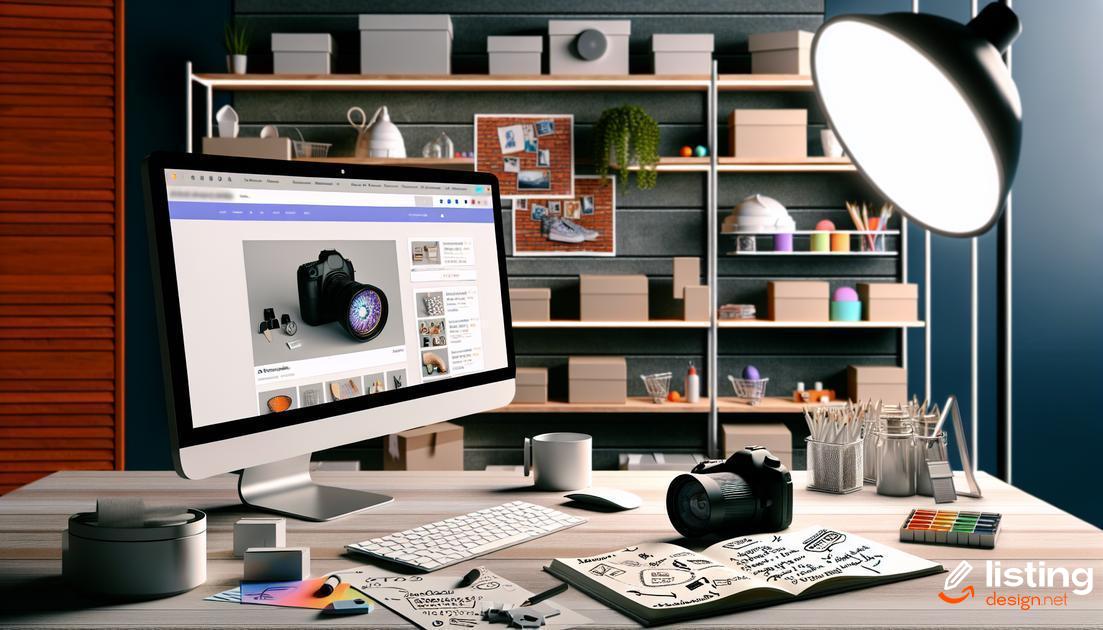Product pictures for Amazon are crucial for catching potential buyers’ eyes and boosting sales. High-quality visuals not only attract attention but also instill trust in your brand. In this guide, we’ll delve into the best practices for creating stunning product photos that comply with Amazon’s standards and optimize your listings for better search visibility.
Table of Contents
Why Product Pictures Matter for Amazon Listings
High-quality product pictures can significantly impact customers’ purchasing decisions. On Amazon, where competition is fierce, having visually appealing images can make your listing stand out. Consumers rely heavily on images to understand the product’s features and benefits. Clear, professional photos can build trust and convey the value of the product more effectively than words alone. Additionally,
product pictures play a crucial role in search engine optimization (SEO)
. Amazon’s algorithm favors listings with quality images, potentially improving your search rankings. Including multiple images showing different angles and uses of the product can provide a comprehensive understanding for buyers, increasing the likelihood of conversion. Furthermore, images that highlight unique features can help differentiate your product from competitors’. This visual strategy is not just about aesthetics; it’s about creating an engaging shopping experience that can drive more sales.
Types of Product Pictures You Need
There are several types of product pictures you need to enhance your Amazon listings and boost sales. Each type serves a distinct purpose and collectively they provide a comprehensive view of your product.
Main Images
Main images are the first thing customers see. They should display the product clearly on a white background, adhering to Amazon’s guidelines. This is often the deciding factor for whether customers will click on your listing.
Secondary Images
Secondary images give additional perspectives and angles of the product. These can show the product in use, highlight its features, and add informational graphics to explain key points about the item.
Detailed Close-ups
Detailed close-ups are used to showcase important product details such as texture, material quality, and specific features. These help to build customer trust by displaying the product’s fine details.
Infographics
Infographics combine visuals with text to provide concise and impactful information about the product. They can highlight key features, benefits, and can often clarify dimensions and specifications that are crucial for the buyer’s decision-making process.
Lifestyle Images
Lifestyle images display the product in use within a natural setting. They help customers visualize the product in their own lives and see its practical applications. These images often evoke an emotional response and can lead to higher engagement.
Comparison Charts
Comparison charts are great for products with multiple variations or when you need to differentiate your product from competitors. They can visually explain the advantages of your product over others and make it easier for customers to make comparisons.
Packaging Shots
Packaging shots give customers a view of the product’s packaging. This is especially important for giftable items, food, or goods where packaging quality reflects overall product quality.
By using a variety of these images effectively, you can create a compelling Amazon listing that stands out and converts potential customers into buyers.
Understanding Amazon’s Image Requirements
Amazon has specific guidelines when it comes to product images. Meeting these requirements is essential if you want your product to appear professional and compliant. Here are the key points you need to remember:
- Image Format: Amazon accepts JPEG, PNG, GIF, and TIFF formats. JPEG is preferred for its balance of quality and size.
- Background: The primary image must have a pure white background (RGB 255, 255, 255).
- Size: Each image should be at least 1000 pixels on the longest side, ensuring it can be zoomed in on effectively.
- Frame: Images must fill 85% or more of the image frame, allowing the product to be the focal point.
- Prohibited Elements: Avoid watermarks, logos, or any additional text that isn’t part of the product itself. These can lead to listing suppression.
- Image Count: Amazon allows up to 9 images per product, but you need at least one. More images can provide a better understanding of the product to the customer.
Following these guidelines will not only keep you compliant but also enhance the customer experience by providing clear, high-quality visuals.
How to Optimize Images for Amazon SEO
Optimizing images for Amazon SEO involves several key steps to ensure your product pictures rank higher and attract more customers. Start by using high-resolution images. Amazon recommends at least 1000 pixels on the longest side to enable the zoom function, providing potential buyers with a detailed view of your product. Attention-grabbing images can significantly impact your click-through rate and ultimately your sales.
Utilize relevant keywords in your image file names and alt texts. This practice helps Amazon’s algorithm understand your product better. For instance, instead of a generic file name like ‘IMG001.jpg,’ use something more descriptive like ‘stainless-steel-water-bottle.jpg.’
Make sure you comply with Amazon’s image guidelines. Ensure the primary image shows only the product against a white background without any props, text, or logos. Secondary images can illustrate the product in use, different angles, or detailed close-ups.
Utilize High-Quality Images
High-quality images enhance the overall perception of your product. Blurry or pixelated images can drive customers away. Prioritize images that are crisp and clear, showcasing unique features of your product.
Highlight Key Features
Use images to highlight the key features and benefits of your product. An image gallery with various angles and contexts can help customers understand what they’re buying, improving your conversion rates significantly.
Don’t forget to keep your branding consistent. Consistent colors, fonts, and styles in your images help build a strong brand identity and create a professional look for your Amazon store. This consistency can instill confidence in potential customers, increasing their likelihood of completing a purchase.
Tips for Taking Professional-Looking Product Photos
Lighting is Key
Proper lighting can make or break your product photos. Utilize natural light whenever possible, but if shooting indoors, invest in a good lighting kit. Avoid harsh shadows and ensure your lighting is even.
Use a High-Quality Camera
A good camera doesn’t have to be expensive. Modern smartphones often have excellent cameras capable of producing professional-quality photos. Ensure your camera settings are optimized for product photography.
Set Up a Neutral Background
A clean, neutral background ensures that your product is the focus of the image. Simple white or light-colored backgrounds work best, and you can use a lightbox for smaller items.
Focus on the Details
Customers want to see the fine details of your products. Take close-up shots and multiple angles to give a comprehensive view. Highlight unique features and textures.
Stabilize Your Camera
Blurred images can be a major turn-off. Use a tripod to stabilize your camera and reduce the risk of blur from shaky hands. This ensures sharp, clear images every time.
Post-Processing
Edit your photos to enhance their quality. Adjust brightness, contrast, and sharpness using tools like Adobe Photoshop or free alternatives like GIMP. Be careful not to over-edit, as this can mislead customers.
By following these tips, you can create professional-looking product photos that will help increase your sales on Amazon.
Best Tools and Equipment for Product Photography
Camera
Choosing the right camera is essential for capturing high-quality product images. While smartphones have advanced features, a DSLR or mirrorless camera offers superior control over settings such as aperture, shutter speed, and ISO.
Lighting
Proper lighting can make or break your product photos. Consider using a lighting kit that includes softboxes or ring lights to eliminate shadows and highlight product details. Natural light can also be effective, but it is less consistent.
Background
A clean, uncluttered background ensures the focus remains on the product. A white backdrop is often the best choice as it meets Amazon’s requirements and offers a neutral setting that doesn’t distract from the product.
Tripod
A sturdy tripod helps maintain camera stability, preventing blurry images. It is especially useful for shooting at slower shutter speeds or when you need to keep the camera in the same position for multiple shots.
Photo Editing Software
Even with the best equipment, post-processing is crucial for achieving professional-looking photos. Software like Adobe Photoshop or Lightroom can help enhance color, correct exposure, and remove imperfections.
DIY vs. Hiring a Professional Photographer
Choosing between DIY and hiring a professional photographer can be a critical decision for your Amazon product listings. Each option has its pros and cons. Doing it yourself allows you to save money and have complete creative control over your photos. There are many tools and resources available to help you take high-quality pictures, such as lightboxes, tripods, and photo editing software.
However, capturing product images that truly stand out requires technical skills and a deep understanding of lighting, angles, and composition. Professional photographers come equipped with high-end equipment and extensive experience, enabling them to produce consistent and visually appealing photos that can significantly influence customer perceptions and boost sales.
While DIY might be a viable option for those on a tight budget, investing in a professional can yield a higher return on investment (ROI) through enhanced product images. Regardless of the path you choose, ensuring your product photos meet Amazon’s image requirements and maintain consistency in branding is crucial for maximizing their effectiveness.
How to Edit and Enhance Product Photos
Editing and enhancing product photos is a crucial step to make them stand out on Amazon. Begin by using high-resolution images to ensure clarity and detail. Adequate lighting during photography minimizes the need for extensive edits.
Employ photo editing software such as Adobe Photoshop or Lightroom to adjust brightness, contrast, and color balance. Remove any background distractions to focus attention on the product. Utilize the clone tool to clear any imperfections.
Cropping is essential to highlight the product and eliminate unnecessary elements. Maintain a consistent frame size to create a clean and professional look. Experiment with different filters and effects sparingly to enhance product appeal without misrepresentation.
For a polished final result, add shadows and reflections to give depth and dimension. This creates a more realistic and attractive image. Use batch processing to streamline edits for multiple images, maintaining a uniform appearance across all product photos.
Ensure all edited photos comply with Amazon’s image requirements to avoid issues during upload. A carefully edited photo can significantly boost the product’s appeal and drive higher sales.
Importance of Consistent Branding in Product Photos
Staying consistent with branding in your product photos is crucial for building a recognizable brand. This means using the same color schemes, fonts, and style elements in every image. Consistency helps create a cohesive look, making your products easily identifiable.
Using consistent backgrounds and lighting can also enhance your brand’s professional image. Aim for uniformity in product placement and angles too. This uniformity builds trust among customers, as they recognize the professionalism and attention to detail put into your brand.
Consider adding your logo or watermark to your images. This not only protects your pictures from being copied but also reinforces your brand’s presence. Ensure that these elements do not obstruct the product view and remain subtle yet visible.
Consistent branding plays a significant role in enhancing the overall shopping experience. It tells a story about your brand, making it memorable and reliable in the eyes of potential customers. This visual consistency across your product photos can lead to increased customer loyalty and better sales performance.
Common Mistakes to Avoid with Product Images
One common mistake is using low-resolution images. Blurry or pixelated pictures can deter potential buyers. Ensure your images are at least 1000 pixels in either width or height to enable the zoom function on Amazon.
Another pitfall is poor lighting. Dark or overly bright pictures can mislead customers about the actual product. Always opt for natural light or use a lightbox to evenly distribute light on the product.
Background clutter is a significant issue. A busy or distracting background can take attention away from the product. Use a clean, white background to make your product stand out. Avoid overly creative backdrops that don’t complement the product.
Not utilizing all image slots offered by Amazon can be detrimental. You have up to 9 slots including the main image—use them effectively. Showcase different angles, features, and lifestyle pictures to give a comprehensive view of the product.
Ignoring Amazon’s image requirements is another frequent mistake. Ensure your primary image has a pure white background, and the product covers at least 85% of the image area.
Inconsistent branding can confuse potential buyers. Maintain a uniform style in all your product images. This includes consistent lighting, background, and image size. Consistent branding in images builds trust and recognition.
Poorly edited photos can also affect your sales. Overusing filters or making the product look too different from reality can lead to returns and negative reviews. Aim for clear, realistic images that accurately represent the product.
Product Picture Trends on Amazon
Staying updated with product picture trends on Amazon can give you a competitive edge. One emerging trend is the use of lifestyle images that show products in real-life scenarios. These images help customers visualize how they might use the product, increasing the likelihood of a purchase.
Another trend is the 360-degree product view. By allowing customers to see a product from every angle, 360-degree views build trust and answer potential questions about the product’s appearance and functionality.
High-resolution images are becoming non-negotiable. Amazon now prefers listings with clear and sharp images that allow for zooming in. This trend highlights the importance of investing in good photography equipment or hiring a professional photographer.
Product videos are also gaining popularity. They provide a more dynamic way to showcase features and benefits, and are particularly effective in capturing attention. Including short, informative videos can significantly enhance your listing’s effectiveness.
Infographics that combine images and text are another growing trend. They provide instant information about the product’s key features and benefits. These are particularly useful in a highly competitive marketplace where grabbing attention quickly is crucial.
Case Studies: Successful Amazon Listings with Quality Images
Quality images play a crucial role in capturing customer attention and driving sales. These case studies highlight how high-resolution, well-optimized photos can make a significant difference in an Amazon listing’s success. By featuring clear and detailed images, sellers can effectively showcase their products, enhance consumer trust, and ultimately improve conversion rates.
One standout example is a tech accessories brand that increased their sales by 30% after upgrading their product images to a more professional standard. They utilized various angles, close-ups, and lifestyle shots to provide potential buyers with a comprehensive view of the product. This approach not only highlighted the product’s features but also helped customers visualize its use in real-life situations.
Another case involves a home decor store that saw a noticeable boost in buyer engagement after focusing on high-quality images. They adopted a consistent style for all their product photos, which created a cohesive brand image across their Amazon listings. This strategy reinforced their brand identity and made their listings instantly recognizable to returning customers.
Additionally, an apparel retailer significantly reduced their return rates by including detailed images with accurate color representation and size guides. Clear images minimized customer confusion and ensured that buyers received what they expected, enhancing overall satisfaction.
These examples demonstrate that investing in quality product photos is essential for standing out in the competitive Amazon marketplace. From increased visibility in search results to higher sales and reduced returns, the benefits are clear. Sellers should prioritize image quality and consistency to maximize their Amazon listing’s performance.








